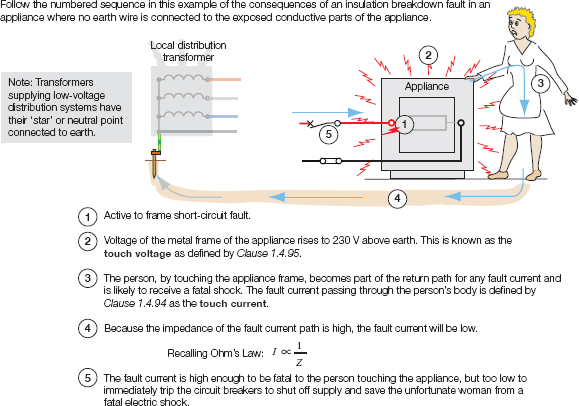In the world of electrical systems, grounding plays a vital role in ensuring safety and the proper functioning of equipment. By connecting electrical circuits to the earth, grounding provides a pathway for electrical energy to discharge and prevents the build-up of excess voltage. This article delves into the significance of grounding in electrical systems, examining its benefits and the potential risks of neglecting this crucial aspect. Whether you’re an electrical professional or simply looking to understand the basics, this article will shed light on the importance of grounding in electrical systems and why it should never be overlooked.
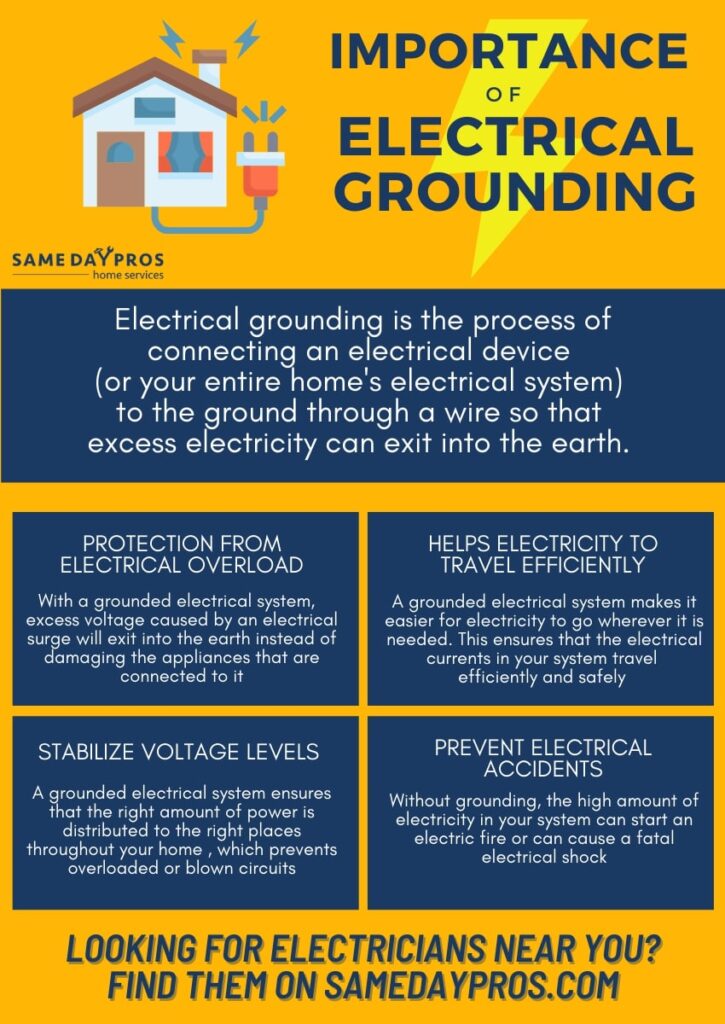
This image is property of dexxaavzo0cpp.cloudfront.net.
What is Grounding?
Grounding, also known as earthing, refers to the process of connecting an electrical system to the earth or a conductive body that serves as a reference point for electrical potentials. It involves creating a safe pathway for electrical currents to flow into the ground, thereby preventing the buildup of excess voltage and ensuring the safety and functionality of electrical systems.
Definition of Grounding
Grounding is the practice of connecting electrical systems, equipment, and devices to the earth or a conductive body to prevent electrical dangers and achieve a stable reference point for electrical potential. It involves the use of conductors, such as ground wires, grounding electrodes, and grounding mats, to establish a low-resistance path for electrical currents to flow into the ground.
Purpose of Grounding
The primary purpose of grounding is to safeguard human life and property from electrical hazards. By connecting electrical systems to the earth, grounding helps to:
-
Ensure safety: Grounding prevents the risk of electric shock by providing a low-resistance path for fault currents to flow into the ground, enabling circuit breakers or fuses to quickly interrupt the circuit.
-
Protect against electrical faults: By establishing a connection to the earth, grounding mitigates the potential damage caused by electrical faults, such as short circuits and power surges, by directing excessive currents away from sensitive equipment and into the ground.
-
Enhance equipment performance and reliability: Grounding reduces electromagnetic interference (EMI), improves power quality, and provides a stable reference point for voltage, thereby promoting the efficient operation and longevity of electrical equipment and systems.
-
Ensure electromagnetic compatibility (EMC): Grounding helps to mitigate electromagnetic interference and radio frequency interference (RFI), ensuring that electrical systems do not interfere with each other and function harmoniously.
Components of Grounding System
A grounding system consists of several key components, each playing a crucial role in establishing a safe and effective grounding connection. These components include:
-
Grounding conductor: This is a copper or aluminum wire that carries fault currents from electrical systems into the ground. It is typically connected to a grounding electrode or a grounding mat.
-
Grounding electrode: The grounding electrode is a metal rod or plate that is buried in the ground or installed in a concrete foundation, acting as a physical connection between the grounding conductor and the earth. Common types of grounding electrodes include ground rods, ground plates, and ground grids.
-
Grounding busbar: The grounding busbar is a metallic strip or bar that provides a common point for connecting multiple grounding conductors. It is often installed in electrical panels or service entrances and serves as a central hub for grounding connections.
-
Grounding clamp: This is a device used to securely connect the grounding conductor to the grounding electrode or grounding busbar. It ensures a low-resistance and reliable connection, preventing any accidental disconnections.
-
Grounding mat: In certain situations, such as in areas with high electrical conductivity, a grounding mat may be installed beneath equipment or within the substation to provide an extended grounding surface.
Types of Grounding
Grounding can be categorized into three main types, each serving a specific purpose in electrical systems.
Functional Grounding
Functional grounding is primarily concerned with preventing electric shocks and maintaining low levels of electrical noise. It involves connecting the non-current-carrying metal parts of electrical equipment and enclosures to the earth, creating a reference point for electric potential. This type of grounding helps to ensure the safety of individuals interacting with electrical devices and protects against static electricity buildup.
Equipment Grounding
Equipment grounding focuses on protecting electrical equipment and devices from damage due to electrical faults. It involves connecting exposed conductive surfaces, such as metal enclosures and frames, to the earth to provide a low-impedance path for fault currents. This ensures that in the event of a fault, excessive currents are directed away from the equipment and into the ground, preventing damage and facilitating the operation of protective devices.
System Grounding
System grounding, also known as neutral grounding, involves connecting one of the power system conductors (typically the neutral conductor) to the earth. The purpose of system grounding is to provide a return path for unbalanced loads and fault currents, ensure voltage stability, and protect electrical equipment from transient overvoltages. System grounding is common in power distribution systems to maintain the balance between the three phases and minimize the risk of electrical faults.
Importance of Grounding
Grounding plays a critical role in the safety, protection, and performance of electrical systems. Here are some key reasons why grounding is important:
Safety
One of the primary reasons for grounding is to ensure the safety of individuals working with or around electrical systems. By providing a low-resistance path for fault currents to flow into the ground, grounding enables circuit breakers or fuses to quickly interrupt the circuit and prevent electric shocks. It helps to minimize the risk of electrical hazards and protects against electrocution and fires caused by faulty electrical systems.
Protection against Electrical Faults
Grounding protects electrical equipment and devices from damage caused by electrical faults. In the event of a short circuit or power surge, excessive currents are redirected away from the equipment and into the ground, preventing overheating, component failure, and potential explosions. By providing a safe path for fault currents, grounding facilitates the operation of protective devices, such as fuses and circuit breakers, which can swiftly isolate the faulty circuit.
Equipment Performance and Reliability
Proper grounding improves the performance and reliability of electrical equipment. By establishing a stable reference point for electrical potential, grounding reduces voltage fluctuations and electromagnetic noise. This helps to enhance the efficiency and accuracy of sensitive equipment, such as electronic devices, computers, and control systems. Grounding also prevents the buildup of static electricity, which can disrupt electronic components and cause malfunctions.
Electromagnetic Compatibility (EMC)
Grounding is essential for achieving electromagnetic compatibility (EMC) in electrical systems. It helps to mitigate electromagnetic interference (EMI) and radio frequency interference (RFI) by providing a low-impedance path for electrical currents. By minimizing the stray currents and voltages that might interfere with other electronic devices, grounding ensures the harmonious coexistence of various electrical systems, reducing signal distortion and data errors in communication networks.
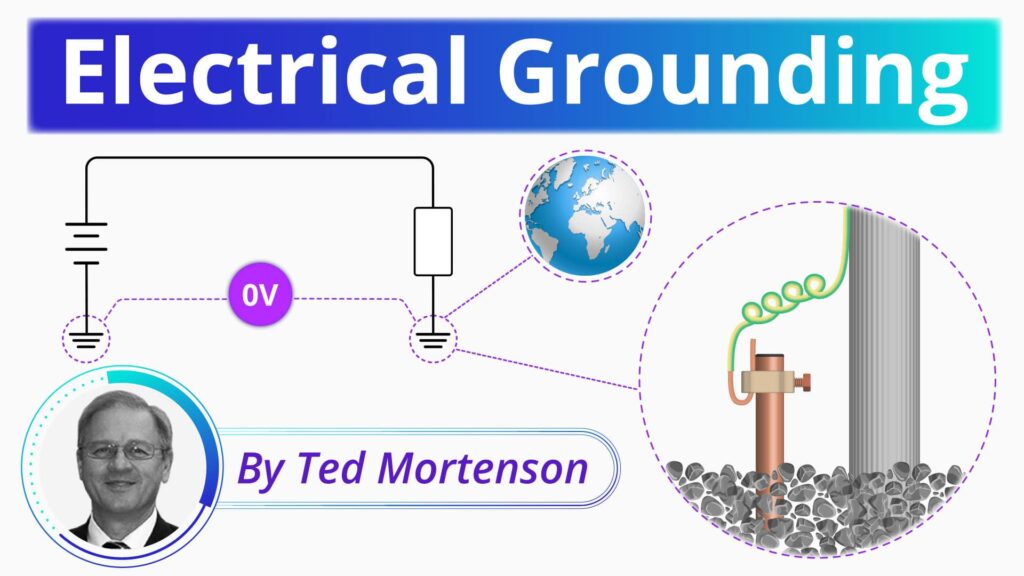
This image is property of realpars.com.
Grounding Methods
There are various methods and techniques for implementing grounding in electrical systems. The selection of a specific grounding method depends on the nature of the electrical system and its intended use. Here are three common grounding methods:
Single Point Grounding
Single point grounding, also known as common point grounding, involves connecting all electrical equipment and devices to a single central grounding point. This method minimizes potential differences between equipment and reduces the risk of ground loops, which can introduce noise and interference. Single point grounding is commonly used in low-voltage and sensitive systems, such as communication networks, to maintain signal integrity and facilitate troubleshooting.
Multiple Point Grounding
Multiple point grounding, also known as distributed grounding, entails connecting electrical equipment to multiple grounding points distributed throughout a facility or system. This method helps to minimize ground resistance and provides redundancy in the grounding system. Multiple point grounding is often employed in industrial settings where equipment is geographically dispersed, allowing for better fault current distribution and protecting against voltage gradients.
Grounding Electrode System
The grounding electrode system involves the use of grounding electrodes, such as ground rods and ground plates, to establish a connection between the grounding conductor and the earth. The electrodes are strategically placed and buried in the ground to ensure a low-resistance path for fault currents. The grounding electrode system is a standard method used in residential, commercial, and industrial electrical systems to achieve reliable grounding and maintain safety.
Grounding Techniques
Various grounding techniques are employed in electrical systems based on specific requirements and objectives. Here are four common grounding techniques:
Solid Grounding
Solid grounding, also known as solidly earthed or direct grounding, involves connecting electrical systems and equipment directly to the earth. In this technique, the neutral conductor is solidly connected to the grounding electrode system, ensuring a low-impedance path for fault currents. Solid grounding provides effective fault current flow and enables efficient operation of protective devices, making it suitable for systems with high fault current levels, such as power distribution networks.
Resistance Grounding
Resistance grounding involves the deliberate insertion of a resistor between the system neutral and the grounding electrode system. This technique limits the magnitude of fault currents and reduces the potential for damage during a fault condition. Resistance grounding is typically used in systems where high fault currents could be hazardous or may lead to equipment damage, such as in healthcare facilities, nuclear power plants, and data centers.
Low-Impedance Grounding
Low-impedance grounding aims to achieve a very low impedance path between the neutral point of the electrical system and the grounding electrode system. It involves minimizing the resistance and inductance of the grounding system to ensure the efficient flow of fault currents. Low-impedance grounding helps to reduce transient overvoltages, limit the duration of fault currents, and enhance the reliability and performance of electrical systems.
Isolated Grounding
Isolated grounding, also known as dedicated grounding, is a technique used to minimize electrical noise and interference in sensitive equipment. It involves running a separate grounding conductor directly from the equipment or device to an isolated grounding electrode. Isolated grounding prevents ground loops and reduces the risk of electrical noise affecting the performance of sensitive electronics, such as medical equipment, computer systems, and audiovisual equipment.
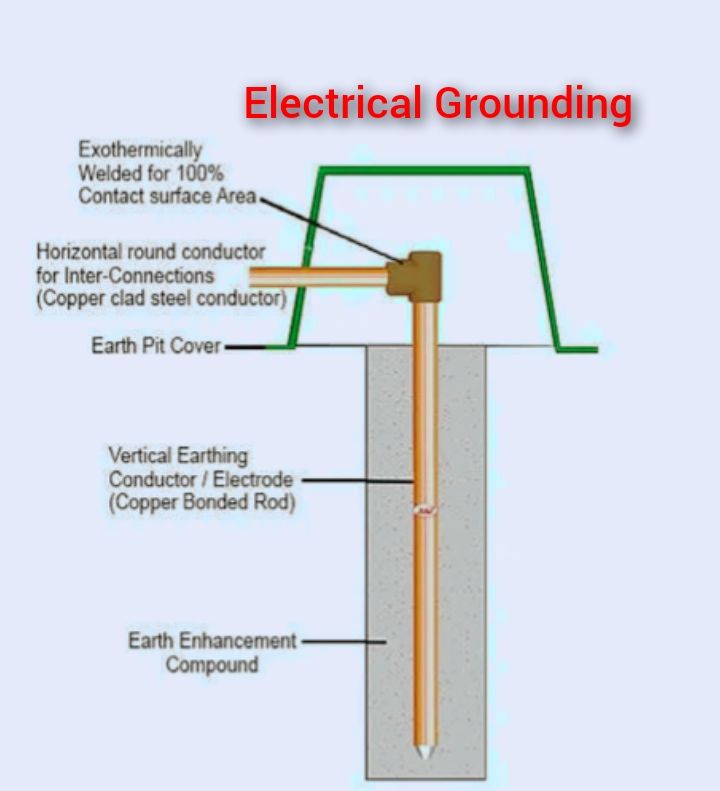
This image is property of irp.cdn-website.com.
Grounding in Residential Electrical Systems
Grounding is an essential aspect of residential electrical systems, providing safety and protection against electrical faults. Here are some specific considerations for grounding in residential settings:
Grounding in Power Outlets
Power outlets in residential buildings are typically equipped with a grounding conductor, commonly known as the third prong. This grounding conductor connects the metal parts of appliances and devices to the grounding system, preventing the possibility of electric shock. Proper grounding of power outlets ensures that any fault currents are swiftly directed into the earth, protecting both individuals and equipment.
Grounding for Appliances
Appliances in residential settings, such as refrigerators, ovens, and washing machines, often have metal components that could become energized during a fault. The grounding of appliances involves connecting these metal parts to the grounding system via the appliance’s power cord. This connection ensures that any electrical faults are safely redirected, minimizing the risk of electrocution or equipment damage.
Grounding for Lighting Systems
Lighting systems in residential buildings typically utilize a grounding conductor to connect the metal components of light fixtures, switches, and electrical boxes to the grounding system. Grounding lighting systems ensures the safe operation of these components and reduces the risk of short circuits or voltage surges. It also provides a path for fault currents to flow into the ground, protecting residents and preventing electrical fires.
Grounding in Industrial Electrical Systems
Grounding is of utmost importance in industrial electrical systems, where the safety of employees, equipment performance, and system reliability are paramount. Here are some aspects of grounding in industrial settings:
Grounding in Power Distribution Systems
Power distribution systems in industrial facilities employ grounding to maintain safety and protect against electrical faults. By properly grounding the system neutral, fault currents are directed away from critical equipment, minimizing the potential for damage. Grounding also provides a reference point for voltage stability and helps to maintain balanced three-phase power distribution.
Grounding for Machinery
Industrial machinery, such as motors, generators, and control panels, often has exposed metal parts that require grounding to ensure safety and functionality. Grounding machinery reduces the risk of electrical shock, dissipates static electricity, and provides a safe path for fault currents. It also helps to prevent electrical noise and interference, ensuring reliable operation and extending the lifespan of the machinery.
Grounding for Control Systems
Control systems in industrial facilities, including programmable logic controllers (PLCs) and distributed control systems (DCS), require grounding for reliable operation. Grounding control systems prevents the buildup of static electricity, minimizes the risk of electrical noise, and reduces the possibility of interference with sensitive control signals. Proper grounding ensures the accurate and efficient functioning of control systems, maintaining process control and safety.
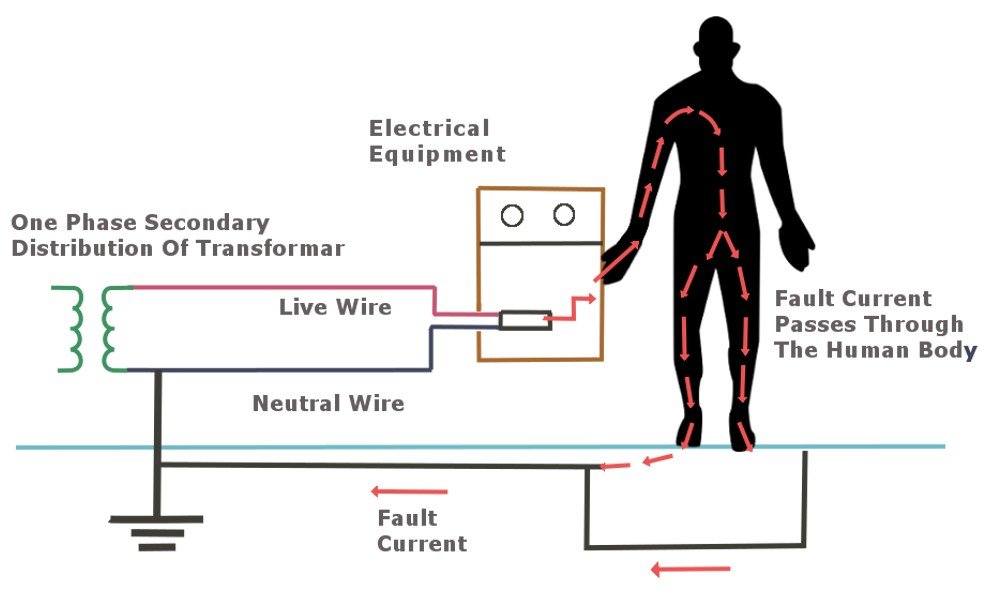
This image is property of kmelectric.com.au.
Grounding in Commercial Electrical Systems
Commercial buildings, such as office spaces, retail establishments, and healthcare facilities, require grounding to provide a safe and functional electrical environment. Here are some considerations for grounding in commercial electrical systems:
Grounding in Office Buildings
Office buildings often have numerous electrical systems and devices, including computers, printers, and communication equipment. Grounding in office buildings ensures the safety of employees and the protection of equipment from electrical faults. Proper grounding helps to maintain a stable electrical environment, minimizing the risk of equipment malfunctions, data loss, and fires.
Grounding for IT and Communication Systems
IT and communication systems in commercial buildings rely on grounding to ensure reliable operation and data integrity. Grounding these systems helps to minimize electrical noise, prevent voltage surges, and protect against potential damage caused by lightning strikes. Proper grounding also facilitates the installation of surge protection devices, ensuring the safety of sensitive electronic equipment and uninterrupted connectivity.
Grounding for Safety Systems
Commercial buildings often have safety systems, such as fire alarm systems and emergency lighting, that require grounding to function effectively. Grounding safety systems ensures their proper operation and allows fault currents to be quickly detected and rectified. It prevents false alarms, reduces the risk of system failures, and helps to maintain a safe and secure environment for building occupants.
Grounding Standards and Codes
Grounding practices are regulated by various standards and codes to ensure uniformity and compliance. Here are some notable standards and codes related to grounding:
National Electrical Code (NEC)
The National Electrical Code (NEC) is a widely recognized standard in the United States that provides guidelines for electrical installation and safety. NEC Article 250 covers grounding and bonding requirements for electrical systems, addressing the design, installation, and maintenance of grounding systems in residential, commercial, and industrial settings.
International Electrotechnical Commission (IEC)
The International Electrotechnical Commission (IEC) is a global organization that develops international standards for electrical and electronic technologies. IEC 60364 is a series of standards that provide guidelines for the design, installation, and testing of electrical installations. Part 4-41 of IEC 60364 focuses specifically on protection against electric shock, including grounding requirements.
IEEE Standards
The Institute of Electrical and Electronics Engineers (IEEE) has developed several standards related to grounding and earthing. IEEE Std 142 provides recommendations for the design and installation of grounding systems in commercial and industrial power systems. IEEE Std 1100 addresses power quality issues, including grounding and electromagnetic compatibility.
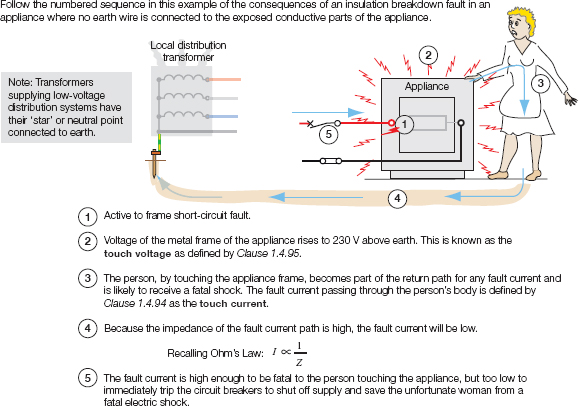
This image is property of electricalacademia.com.
Maintenance and Testing of Grounding Systems
To ensure the ongoing effectiveness of grounding systems, routine maintenance and testing are necessary. Here are two common methods for evaluating the condition of grounding systems:
Visual Inspection
Regular visual inspections allow for the identification of any visible issues or deterioration in grounding components. Inspectors should check for loose or damaged connections, corrosion, physical damage to grounding electrodes, and proper installation of grounding conductors. Visual inspections should be conducted periodically, especially after significant events like lightning strikes or construction activities that could impact the grounding system.
Ground Resistance Testing
Ground resistance testing is performed to measure the resistance of the grounding system. Using specialized equipment, technicians can assess the performance and effectiveness of the grounding system by measuring the resistance of the grounding electrode to the earth. This testing is critical to ensure that the grounding system meets the required specifications and provides a low-resistance path for fault currents. Ground resistance testing should be performed regularly, especially when modifications or additions are made to the electrical system.
Ground Fault Testing
Ground fault testing, also known as ground fault circuit interrupter (GFCI) testing, is essential for verifying the proper operation of ground fault protection devices. These devices are designed to quickly detect and interrupt ground faults, preventing electric shock and potential equipment damage. Regular testing ensures that these devices are functioning correctly and can effectively protect against ground faults.
In conclusion, grounding is a fundamental aspect of electrical systems that ensures safety, protects against electrical faults, enhances equipment performance, and promotes electromagnetic compatibility. By implementing appropriate grounding methods, techniques, and standards, the risks associated with electrical hazards can be effectively mitigated, ensuring the reliable and efficient operation of electrical systems. Regular maintenance and testing of grounding systems are essential to preserve their integrity and effectiveness.

